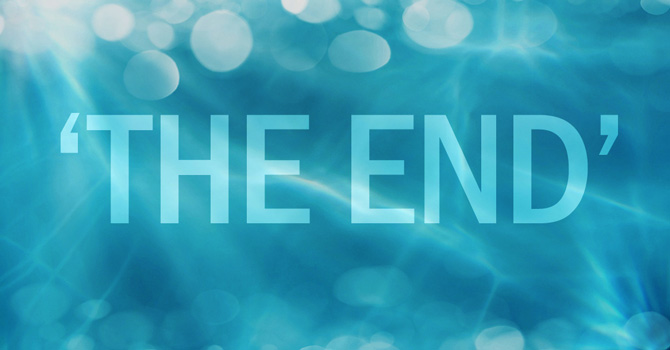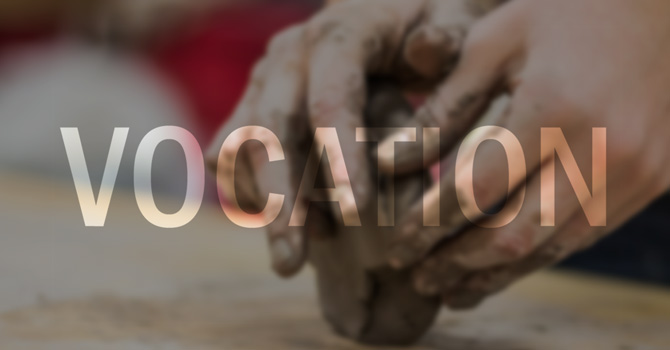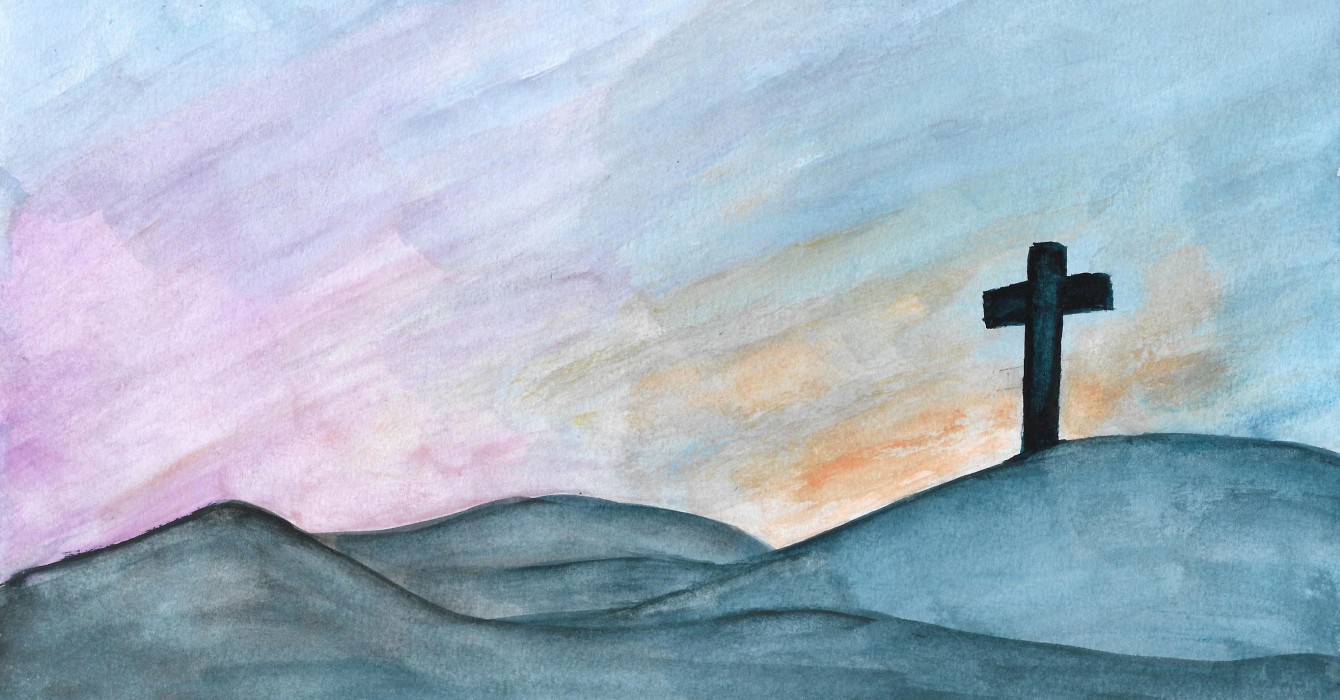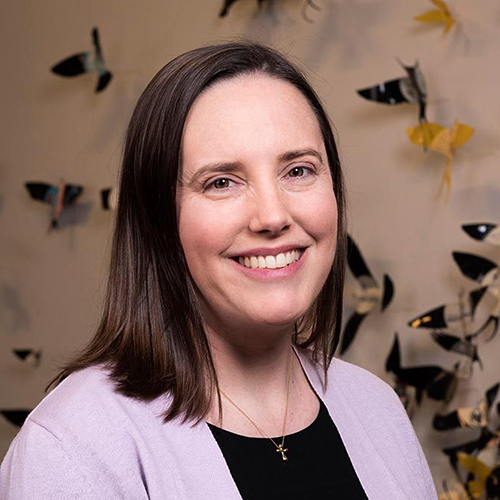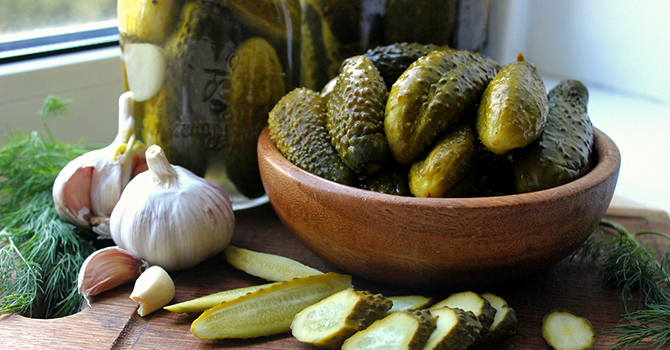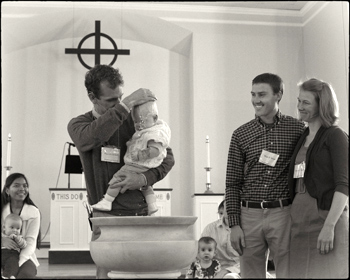We shall not cease from exploration
And the end of all our exploring
Will be to arrive where we started
And know the place for the first time.
-- T.S. Eliot (from “Little Gidding”)
In Christian theology, when we talk about “the end,” we often are referencing Jesus’ return, the end of times, the new heaven and the new earth, the eternal things we await. But Christian faith doesn’t simply point to the chronological end of things; it challenges us to live eternally today. Eternality is not a far-off end goal but a daily, lived reality of being Christian.
In this series of four visual poems and lessons, we will explore the practices and tenets of the Christian faith as ongoing frames for understanding God’s work in our daily lives. Baptism, communion, our identity in Christ and the incarnation are not “ends” -- final goals -- once-achieved or grasped and then forgotten. Instead, they are “ends” -- animating purposes -- through which we can explore God’s transformative and redeeming work in our lives, our communities and our world.
In “Baptism as ‘the end,’” Ella Russell, the creator and owner of E-dub-a-licious Treats, describes baptism as a process of ongoing reflection and change, dying to self and rising to new life in Christ, and continual discovery of that new life.
In “Communion as ‘the end,’” Joshua Bingaman, an entrepreneur and boot-maker, strives to live his life in a way that invites the suffering to heal together. Communion, for Joshua, is not a one-time act but a remembering and re-remembering of the faith and the healing we have, even in times of deep doubt.
How will you use this curriculum?
Please take a moment to share how you will use these lesson plans in your ministry context.
Take our 2-minute survey. »
Jillian “JJ” Simmons, a radio personality and nonprofit leader, shares her discovery of the true meaning of identity in “Identity as ‘the end.’” Her relationship with Jesus and identity in Christ doesn’t just change her life but impacts everyone around her in everything she does.
Finally, in “Incarnation as ‘the end,’” sculptor Anthony Suber challenges us to see Jesus’ incarnation as the beginning of the Gospel story that leads us to new ways of seeing, embodying and being.
Each of these concepts (baptism, communion, identity and incarnation) leads us to a deeper understanding of who we are and what we have to offer the world -- to greater ends than we could ever have imagined.
Accompanying each film, there is a guide for conversation, Scripture study, practice and prayer. The guides are designed to suit a broad range of audiences and ages, from high school youth to adults. Through open-ended questions, they allow facilitators to shape the conversation to meet the particular needs of their groups. We encourage facilitators to watch the films ahead of time to become familiar with the people and themes in each.
The lessons follow a basic pattern:
- Gathering conversation, introducing the theme
- Visual poem viewing and discussion
- Scripture study, exploring the intersection of the poem and God’s word
- Practice
- In the room – kinesthetic or creative exercises to engage group participants in a deeper way
- In the community – challenges to take the conversation about the poem and Scripture into participants’ daily lives
- Closing prayer
Contributors to this curriculum are Laura Addis, Dominique D. Gilliard, Kelly Ryan, Marlon F. Hall and Alaina Kleinbeck. If you have questions about the curriculum, please contact duyouth@div.duke.edu.
We have provided brief commentaries on the Scripture passages. If you would like deeper scriptural commentary, we recommend the Resource Library on Ministry Matters.
Interested in further reflection on the idea of “the end”? Please see our resources section below the lesson plans.
Lesson 1: Baptism as ‘the end’
Facilitator’s introduction
This video introduces us to Ella Russell, a baker and entrepreneur in Houston, Texas. Ella sees the work of baptism in her life’s work of baking. While both baptism and baking are moments in time, they are also processes; the transformation that occurs is stretched out over time. Baptism and baking have created and continue to create a freshness in Ella’s life, each demanding deep trust and pointing toward the eternal promises of being made new in Christ.
In Mark 1:16-20, Jesus -- immediately after his baptism and trials in the wilderness -- begins to call his disciples. Though these disciples are poor fishermen whose families depend on their work, they leave their nets and follow when Jesus calls. It is a moment of radical trust and faith, but just the beginning of a new and evolving life in community. Jesus’ act of creating a community after baptism challenges us to explore what baptism is calling us to create in our lives.
Baptism is the Christian rite of initiation into Christ’s body, the church -- the dying of self and rising of a new life in Christ. For the disciples, for Ella and for us, what begins with a call or a baptism becomes a life of following Jesus together, dying and rising with him, discovering God’s eternal purposes, and being surprised by where God takes us.
Materials
- Bibles or printed copies of Mark 1:16-20
- Baptismal remembrance liturgy (see below)
- Candle
- Pitcher and bowl with water
Gathering
Begin with your own opening prayer or the one provided:
Merciful God, in baptism you liberate us from sin, death and all that is not in you by uniting us to the death and resurrection of Jesus Christ. Open our eyes and hearts to the ways we can live as a resurrected people today. Amen.
Introduce the theme of “the end,” using the information in the description for this track.
Turn the discussion to baptism. Invite the members of your group to break into clusters of two or three. Ask each person to share the story of his or her own baptism or a baptism he or she witnessed. After the small groups have finished, convene the large group and share the themes of the stories.
Visual poem
Watch the film, and consider these questions:
- What stood out to you? What resonated with you?
- What struck you as new, different or uncomfortable? Why?
- How does Ella’s understanding of baptism -- as a process instead of an event -- challenge or connect to your understanding of baptism? How does it connect to our own stories of baptism?
Scripture study
Read Mark 1:16-20 together.
Discuss these questions:
- Whom does Jesus call? With whom does he call them? What does he call them from? What does he call them into?
- Baptism is often described as a dying to self and a rising to new life in Christ. How do the disciples live out that description? What similarities do you see between the way the disciples follow Jesus and the way Ella speaks of baptism? What differences do you see?
- How are calling and baptism related? How are they related to community?
- Only in hindsight was Ella able to recognize that her inability to provide treats for her sons’ classes was the beginning of a new career, created through the fresh, transformative mindset that springs from her baptism. With the benefit of hindsight, what can you see that your baptism has created through you?
- Who has been your baptismal community, your Crumbheads? How do you join with your community to live out your baptismal calling?
Practice
We invite you to practice what you are studying and discussing through experience. You will begin this work in the room, as a group, and continue independently in the community.
In the room
Baptism is an important ritual in the life of faith. Remembering our baptisms grounds us in baptism’s ongoing call in our lives. Below is a suggested order of baptismal remembrance.
Many Christian traditions and denominations have developed similar orders. We encourage you to use or craft an order that fits your group.
A baptismal remembrance
Light a candle, explaining that it symbolizes the light of Christ that came into our lives at our baptism.
Sing “Wade in the Water,” “Come Down, O Love Divine,” “I’ve Got Peace Like a River” or “Come, Thou Fount of Every Blessing.”
Read the Apostles’ or Nicene Creed together.
Pour water from a pitcher into a bowl, and say a prayer of thanksgiving over it. You may create your own prayer, use one from your tradition or pray this one from the Presbyterian Church (U.S.A.):
Eternal and gracious God, we give you thanks. In countless ways you have revealed yourself in ages past, and have blessed us with signs of your grace. We praise you that through the waters of the sea you led your people Israel out of bondage, into freedom in the land of your promise.
We praise you for sending Jesus your Son, who for us was baptized in the waters of the Jordan, and was anointed as the Christ by your Holy Spirit. Through the baptism of his death and resurrection you set us free from the bondage of sin and death and give us cleansing and rebirth.
We praise you for your Holy Spirit, who teaches us and leads us into all truth, filling us with a variety of gifts, that we might proclaim the gospel to all nations and serve you as a royal priesthood.
We rejoice that you claimed us in our baptism, and that by your grace we are born anew. By your Holy Spirit renew us, that we may be empowered to do your will and continue forever in the risen life of Christ, to whom, with you and the Holy Spirit, be all glory and honor, now and forever.
Amen.
Using the water, mark each other with the cross, saying, “Remember your baptism and be thankful. In the name of the Father, Son and Holy Spirit. Amen.”
In the community
Make a list of people who have impacted or supported your baptismal journey. Choose one of those people and write him or her a note celebrating your friendship and companionship. Send the note or share it in person. Consider adding a cookie, a candle or a small pitcher as a gesture to Ella’s and our baptismal stories.
Closing prayer
You may wish to say a prayer of your own or use the following verse from the hymn “Spirit of God, Unleashed on Earth,” by John Arthur:
Let new lips, tasting vict’ry won,
Inspire our hearts grown cold with fear;
Revive in us baptismal grace,
and fan our smold’ring lives to flame.
Amen.
Lesson 2: Communion as ‘the end’
Facilitator’s introduction
Communion is not a one-time act but a remembering and re-remembering of the way in which Jesus’ broken body healed and continues to heal the world. In this visual poem, we meet Joshua Bingaman, the founder and owner of Progress Coffee and Helm Boots. In each of his business ventures, he says, he is drawn to places of suffering and the stories of transformation and healing he finds there. His understanding of the people of Christ -- both broken and healed -- prompts an imagination for healing in community.
In 1 Corinthians 11:17-34, Paul is angry at the church in Corinth for practicing communion in ways that honor the elite members of the church and demean the less advantaged. The words of institution (11:23-26) rest in the middle of his condemnation of their practice. Paul follows this chastisement with a lengthy description of what it means to be the body of Christ (chapter 12) and what love looks like in the body of Christ (chapter 13). In the Christian tradition, we often reference verses in these three chapters, but we don’t often spend time thinking about them together and reflecting on their connection.
With this visual poem, we will explore how brokenness can be a site of healing. For Joshua, it is community that heals him. In communion, the broken body of Jesus binds us together for the healing of the world.
Materials
- Bibles
- Aluminum foil, clay or pipe cleaners
Gathering
Begin with a prayer. Offer your own selection, or pray this one:
Jesus, you are the healer of all wounds and the mender of all brokenness. Bring us closer to you in our conversations today, closer to your body, that we might discover your healing and the ways you call us to be your healers in the world. Amen.
Ask group members to share with a partner or two a time when taking communion was particularly significant to them. As a group, briefly share the themes from the stories.
Visual poem
Watch the film together and then spend as much time as necessary allowing people to share their reactions. If needed, ask:
- What questions did Joshua prompt for you?
- What moments or statements from the video stood out to you?
- What does Joshua do to remember the significant community he has experienced? How does Joshua understand the connection between suffering, healing and community?
Scripture study
Read 1 Corinthians 11:17-34 together aloud. If needed, stop at the end of each paragraph and summarize or ask someone from the group to summarize. Then ask:
- How does Paul understand the connection between division, unity and communion?
Ask the group to turn one chapter forward and read 1 Corinthians 12:18-19. These verses are part of a section on the body of Christ and honoring the differences in the body of Christ. Discuss:
- What is the connection between Paul’s anger about how the church is taking communion and how he sees the members of the body of Christ?
- Why is it important that the Corinthian church change the way it understands community and membership in the body of Christ?
- What does Paul’s teaching tell us about healing and community? How does this connect to Joshua’s story?
- Why do we take communion? What is the significance of taking communion together as a faith community? Why don’t we take communion alone?
- How have we strayed from Paul’s teachings on the body of Christ and communion? Where have we failed to honor vulnerable or hurting members of our body?
- How can our practice of communion be a place that begins healing in our body? What can we do after communion to extend healing into our own lives and into the community?
Practice
Invite your group to extend its conversation about healing, community and communion through practices together, in the room, and then in the community.
In the room
Jesus shared the bread and the wine, his body broken and blood shed, as a tangible representation of his most intimate longing for healing the world.
Make available the art materials of your choice (aluminum foil, clay or pipe cleaners).
Invite the group members to create pieces of sculpture that tangibly represent their longings for the healing of the world. As they create their sculptures, have them contemplate:
- Where do I most long to see healing in the world?
- How will I use my body (action) and my blood (passion) to see that happen?
Invite the group to share.
In the community
Make plans to have a meal with friends or family with whom relationships may be distant or difficult. Get to the table a few minutes early and reflect on the holiness of your meal and the community your table will create. Ponder:
- How can this meal be a time of healing?
- How can you offer yourself as Christ does for the healing of relationships?
Call a friend from your small group and reflect on the experience.
Closing prayer
You may wish to say a prayer of your own or use the following poem, “Will You Meet Us?” by Jan Richardson, from “Circle of Grace”:
Will you meet us
in the ashes,
will you meet us
in the ache
and show your face
within our sorrow
and offer us
your word of grace:
That you are life
within the dying,
that you abide
within the dust,
that you are what
survives the burning,
that you arise
to make us new.
And in our aching,
you are breathing;
and in our weeping,
you are here
within the hands
that bear your blessing,
enfolding us
within your love.
Amen.
Lesson 3: Identity as ‘the end’
Facilitator’s introduction
As we watch Jillian Simmons, we find a radio personality, mother and philanthropist with the desire to use her own life experiences to help those around her. As Jillian grows in her understanding of her identity in Christ, this identity impacts everything and everyone around her. Jillian’s confidence in her eternal identity in Christ points her to the possibility of making change in her community today.
In Genesis 12:1-3, Abram receives a promise of blessing from God. God promises to make Abram’s family into a great nation, and through that family, to bless all the peoples of the earth. The identity that Abram receives from God -- father of a great nation, one who blesses the earth -- demands that he leave behind the identity he inherited from his father. Abram’s immediate response is faithful to his new identity (“So Abram went …,” 12:4), but his continuing story reveals challenges to that identity that require an ongoing process of transformation. Though Abram doesn’t live to see his blessing fully realized, his faith remains strong, trusting God’s promise.
We receive a new identity in baptism, an identity in Christ. This identity transformation, too, is both immediate and ongoing. As we live our lives, we discover new ways that God calls us to follow Christ and live as a blessing to the people in our communities. The purpose of our identity in Christ is realized in the ways that our lives bless others. As we ground our identity in Christ, we may not always see or understand the full fruits of our efforts, but Jillian’s and Abram’s stories encourage us to trust God’s promises.
Materials
- Bibles or printed copies of Genesis 12:1-3
- Notecards and pens
Gathering
You may choose to offer your own opening prayer or the one provided:
In the name of God the Father, God the Son and God the Holy Spirit, make your presence known in our conversation today and in all parts of our lives. Renew our sense of identity in Christ so that we might follow you more faithfully. Amen.
Invite participants to use their smartphones to pull up their personal profiles on a social media site such as Facebook or Twitter. Ask:
- Who do you say that you are in your social media presence? If you don’t participate in social media, why not?
- How does your social media profile differ from your identity?
Visual poem
Watch the visual poem together and then spend as much time as necessary allowing people to share their reactions. If needed, ask:
- What intrigues you about Jillian’s story?
- What parts of Jillian’s story do you identify with? What parts challenge you?
Scripture study
Read Genesis 12:1-3 together. Discuss:
- What did God promise Abram about his identity? From what did God call Abram? What does Abram’s new identity call Abram into doing and being? Why is Abram blessed?
- Over the course of Jillian’s life, who or what has defined her identity? Where does Jillian find her identity now? How does she express that identity in her various roles?
- How does Jillian bless others through her work as a radio personality, her work with her nonprofit, I’m Me, and her parenting? How is this work of blessing related to her identity in Christ? How does Jillian’s identity in Christ point her toward the eternal things of God?
- Jillian and Abram both experienced identity transformations. How have you understood your identity in the past? How does that stand in contrast to how you understand your identity today? How has your call to follow Jesus been both an instantaneous transformation and an ongoing process?
- How does your identity in Christ guide you in your daily life, your work and school, your decisions, and your relationships?
- How can we live as blessings to the people in our community? When our identity is challenged, how can this lead us to trust in God’s promises?
Practice
Invite the group you are leading to explore identity more deeply through embodied experiences, both in the room and in the community.
In the room
Sometimes, it is easy to form our identities around what we are “not” or what we are “against” without moving forward to God’s eternal purposes. Still, the negative things we speak and act against can be a means to discovering God’s work in our lives for the eternal things. The negative messages Jillian speaks and works against are a means by which she redefines beauty and self for girls and women.
Distribute notecards and pens to the group. Invite group members to write at the top of their cards “I speak and act against …”
Then invite them to complete the sentence according to their passions, such as “I speak and act against our culture’s distorted notions of beauty and worth.”
Once everyone has had time to write, have the group members pass the cards to their left.
Ask everyone to read the passed cards aloud, beginning with the words “I speak and act against …” This exercise invites group members to accept responsibility for bearing each other’s passions. As each statement is read, brainstorm the eternal purposes God might be leading its writer to discover.
Then shift the cards back to the writers. Invite them to turn the cards over and write the words “God is leading me toward …,” completing the sentence with the eternal purposes God is leading them to discover through their negative passions, such as “God is leading me toward solidarity with the vulnerable.”
As each person reads his or her statement aloud, invite the group to share how they see the writer living into his or her identity in Christ and blessing the community through this commitment.
In the community
Do an internet search for a safe and dependable local program/project that is against what you are “against” and for the eternal purposes God is leading you to discover. How can you get involved in their work? Can you volunteer with them? Organize a support drive among your church, friends or community?
If you feel resistant, spend some time journaling or talking to a trusted friend. Use these questions to prompt your reflections:
- Why do I feel hesitant to live out my ideological commitments?
- How is my identity in Christ challenging me to do uncomfortable things?
- What can I do to break down the barriers to my involvement?
Closing prayer
You may wish to say a prayer of your own or the following prayer from the Revised Common Lectionary Prayers:
God of the covenant,
you call us to be fruitful servants within creation,
and to offer our lives
as the foundation of your realm.
We lay before you the desires of our hearts,
that we may be transformed by their fulfillment.
Invite the group to offer personal prayers. After all the prayers have been offered, observe silence and then conclude with this:
Grant, O God, that the prayers we offer
may be your channel for new and abundant life
not only hoped for,
but worked for,
through faithful word and deed. Amen.
Lesson 4: Incarnation as ‘the end’
Facilitator’s introduction
Anthony Suber, a Houston-based artist, uses art to cause social change. His pieces, made from discarded materials found in his neighborhood, incarnate his idea that even castoff things can be made new. His art does not exist solely for itself but to compel the viewers into a new way of being. In his work as a sculptor, Anthony has found a way to witness to the eternal things of God through ordinary materials like metal and wood.
John opens his Gospel, in John 1:1-14, with the story of the incarnation -- that Jesus came into the world as the light that shines in darkness. Jesus took on human flesh, and our broken nature, and redeemed it, glorifying God while living among us. The incarnation is the beginning of the Gospel story that leads us into new ways of seeing, embodying and being. Jesus’ incarnation testifies that every part of us, even the messy bits, will become part of God’s eternal things.
The theological concept of the incarnation of Jesus is a fundamental belief for Christians. Its implications for our daily lives are far-reaching. In John 1:6-9, we hear about John the Baptist, who, though not the light, testified to the light. We also are not the light, though our lives are a testimony to it. As we live our lives, incarnating our faith, we testify to the redemption that Jesus made manifest in the incarnation. Just as with Anthony and John the Baptist, our everyday lives serve as a witness to the eternal things of God.
Materials
- Printed copies of John 1:1-14
- Pens, colored pencils or markers
- Coloring sheets (see link below)
Gathering
Open with a prayer of your choosing or the one provided:
Eternal God, as you became one among us in the world through Jesus, we ask that you become one among us in this conversation. Reveal to us how we might become witnesses to your eternal things every day of our lives. Amen.
Break into groups of three or four. Invite each participant to choose one item from his or her pocket or purse that will be discarded, such as a ticket stub or a receipt. Each person will have an opportunity to tell the story of the item. Offer questions, if needed, to prompt the storytelling:
- What did you do with the item?
- Who were you with?
- What did you learn?
- What memory did you make?
Visual poem
Watch the video together and then spend as much time as necessary allowing people to share their reactions. If needed, ask:
- What moments of Anthony’s story stood out to you?
- What’s unique about Anthony’s approach to living out his faith?
Scripture study
Distribute copies of John 1:1-14, along with pens, colored pencils or markers. Read the passage aloud, either in unison or with one reader.
Give the group five minutes or so to reread the passage silently and mark connections to Anthony’s poem, as well as significant words or ideas in the passage. Invite the group to share their reflections. Then discuss:
- Anthony talks about using story to undergird an abstract idea. How does Anthony incarnate his faith and conviction in his work?
- What is John the writer telling us about the incarnation? How is the testimony of John the Baptist connected to the incarnation? How is John the Baptist’s testimony connected to Anthony’s? To ours?
- What story about addiction does Anthony’s art, made from discarded materials, incarnate for those who see his work? How is this testifying to the light in darkness?
- What story is your life and/or work incarnating? What eternal things are you bearing witness to?
Practice
Practices are embodied experiences that help us learn and reflect more deeply than words alone. Encourage your group to participate in the practices below together, in the room, and then independently in the community.
In the room
Praying with color often helps focus our prayers in a different way. Using one of the downloadable coloring sheets, invite your group to color and pray over these questions:
- Where is God asking you to testify to the light?
- What is God asking you to redeem to bear witness to God’s eternal things?
In the community
Take a walk around the block surrounding your home, church or office. Collect three to five materials that catch your attention for being messy, discarded or broken. Reflect:
- How might these materials be redeemed to testify to the light and the eternal things of God?
- How can you use these materials to testify to the light?
Consider taking a photo of the materials and posting about it to your favorite social media site or sending a text to a friend.
Closing prayer
Close by praying the Magnificat, Mary’s song upon discovering that she will bear the Christ child (Luke 1:46-55 ICET):
My soul proclaims the greatness of the Lord,
my spirit rejoices in God my Savior;
for he has looked with favor on his lowly servant.
From this day all generations will call me blessed:
the Almighty has done great things for me,
and holy is his Name.
He has mercy on those who fear him
in every generation.
He has shown the strength of his arm,
he has scattered the proud in their conceit.
He has cast down the mighty from their thrones,
and has lifted up the lowly.
He has filled the hungry with good things,
and the rich he has sent away empty.
He has come to the help of his servant Israel,
for he has remembered his promise of mercy,
The promise he made to our fathers,
to Abraham and his children for ever.
Amen.
Resources
If you’re interested in exploring the topic of “the end” more deeply, we invite you to engage these resources.
Books
“Book, Bath, Table and Time: Christian Worship as Source and Resource for Youth Ministry,” by Fred Edie
“Take this Bread: A Radical Conversion,” by Sara Miles
“Gilead: A Novel,” by Marilynne Robinson
Films and videos
Faith & Leadership
Baptism
Allan Hugh Cole Jr.: A spiritual life
Ed Moore: Advent, baptism and blow-dryers
Laura Everett: When heaven tastes like Jell-O salad
Seeing, believing and the new birth from above
Communion
Jacob Paul Breeze: Pray, believe, live -- a rural congregation discovers the gift of liturgy
Noelle York-Simmons: No hands but ours
Identity
Catherine A. Caimano: Signs and wonders
Dinner -- and the gospel -- is served, at St. Lydia’s
Jason Byassee: Straining toward holiness. Together.
Jena Lee Nardella: What do you do when your idealism crumbles?
Michael B. Curry: We need some crazy Christians
Incarnation
Edgar Moore: Taking Jesus out of the stained glass

